Is Valentine's Day grossly commercialised? We guess so, but not here. EFSP is for lovers, not for ads. So let's get crazy with 12 postcards full of hearts, kisses and amour, amore, liebe, karlek, liefde... You can't have enough of that.
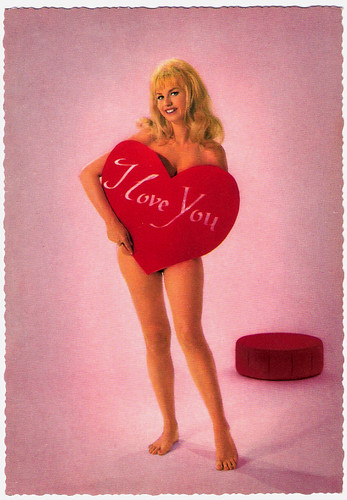
German Postcard by Krüger, no. 900/272.
Film and TV actress Barbara Valentin (1940-2002) was dubbed the 'German Jayne Mansfield' and a 'Scandal Magnet'. Her résumé includes sexploitation but also art films directed by Rainer Werner Fassbinder. Her private life was fodder for the tabloids. Pop star Freddie Mercury was ‘the love of her life’.

German postcard by Ross Verlag, no. 5158/1, 1930-1931. Photo: Radio Pictures (RKO). Publicity still for Love Comes Along (Rupert Julian, 1930) with Lloyd Hughes and Bebe Daniels.
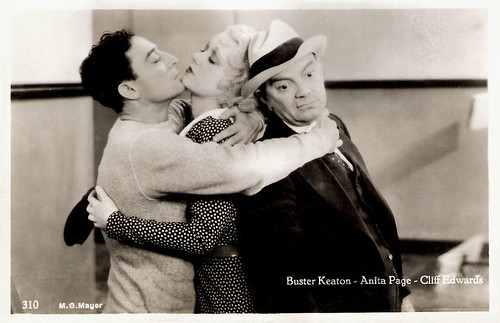
Dutch postcard by JosPe, no. 310. Photo: Metro-Goldwyn-Mayer (MGM). Publicity still for Sidewalks of New York (Zion Myers, Jules White, 1931) with Buster Keaton, Anita Page and Cliff Edwards.
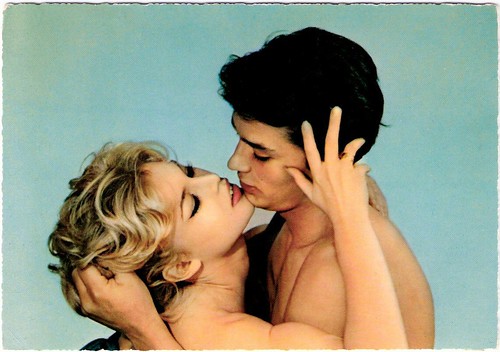
German postcard by Krüger, no. 902/95. 1961. Photo: Sam Lévin. Publicity still for the anthology film Amours célèbres/Famous Love Affairs (Michel Boisrond, 1961). Alain Delon and Brigitte Bardot starred in the segment Agnès Bernauer.

German postcard by Ross Verlag, no 6452/1, 1931-1932. Photo: Fox. Publicity still for Delicious (David Butler, 1931) with Charles Farrell and Janet Gaynor.

German postcard by Photochemie, Berlin, no. K.2823. Photo: Sommer Film, Berlin.
Ernst Matráy (1891-1978) was a Hungarian dancer, choreographer, actor and film director. In Berlin, he worked with Max Reinhardt and Ernst Lubitsch. With his sister-in-law, Katta Sterna, he formed an ideal film couple. Together with his wife, Maria Solveg, he later did the choreography for some classic Hollywood films.
St. Valentine's Day began as a liturgical celebration of one or more early Christian saints named Valentinus. Several martyrdom stories were invented for the various Valentines that belonged to 14 February.
A popular hagiographical account of Saint Valentine of Rome states that he was imprisoned for performing weddings for soldiers who were forbidden to marry and for ministering to Christians, who were persecuted under the Roman Empire.
According to legend, during his imprisonment, he healed the daughter of his jailer, Asterius. An embellishment to this story states that before his execution he wrote her a letter signed "Your Valentine" as a farewell.
Today, Saint Valentine's Day is an official feast day in the Anglican Communion, as well as in the Lutheran Church. The day was first associated with romantic love in the circle of Geoffrey Chaucer in the High Middle Ages, when the tradition of courtly love flourished.
In 18th-century England, it evolved into an occasion in which lovers expressed their love for each other by presenting flowers, offering confectionery, and sending greeting cards known as 'valentines'.
Valentine's Day symbols that are used today include the heart-shaped outline, doves, and the figure of the winged Cupid. Since the 19th century, handwritten valentines have given way to mass-produced greeting cards.
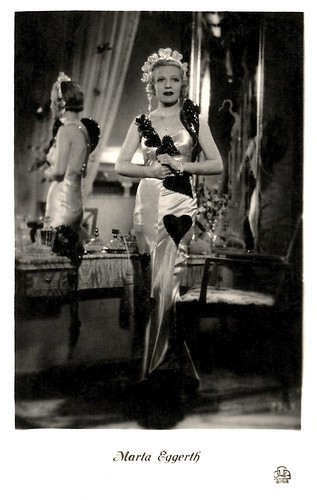
Latvian postcard by JUR, Riga.
Hungarian-born singer and actress Márta Eggerth (1912-2013) maintained a global career for over 70 years. She was the popular and talented star of 30 German and Austrian operetta films of the 1930s. Many of the 20th century's most famous operetta composers, including Franz Lehár, Fritz Kreisler, Robert Stolz, Oscar Straus, and Paul Abraham, composed works especially for her. After the rise of the Nazis, she continued her career in the US, together with the love of her life, tenor Jan Kiepura.
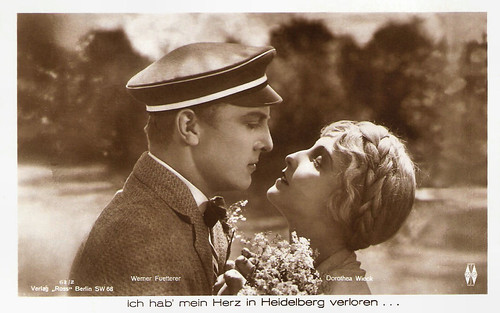
German postcard by Ross Verlag, Berlin, no. 61/2, 1926. Photo: Münchner Lichtspielkunst AG (Emelka). Publicity still for Ich hab mein Herz in Heidelberg verloren/I Lost My Heart in Heidelberg (Arthur Bergen, 1926) with Werner Fuetterer and Dorothea Wieck.

German postcard by Rotophot, no. 220/1. Photo: Becker & Maass, Berlin.
German actress Ida Wüst (1884-1956) was a Ufa star who appeared in almost 150 films. In the 1930s she became one of the most popular aunts of the German cinema. Her one-time husband, German actor Bruno Kastner (1890-1932) was one of the most beloved stars of the 1910s and 1920s. His parts as the elegant and charming dandy made him a heart throb of the German silent cinema.
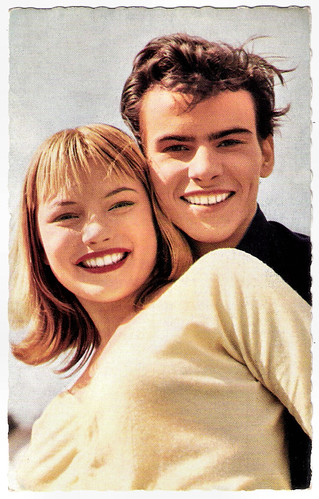
Austrian postcard by Lichtbild-Vertrieb Paula Weizmann, Wien, no. F 7. Photo: Interwest / Union-Film / Haenchen. Publicity still for Die Halbstarken/Teenage Wolfpack (Georg Tressler, 1956) with Karin Baal and Horst Buchholz.
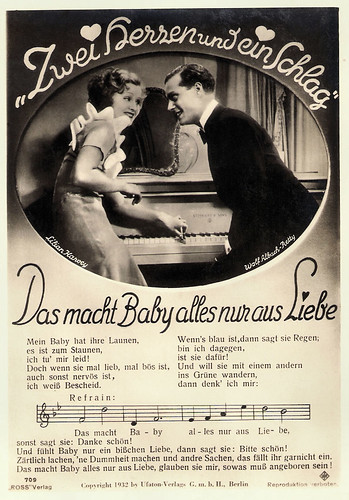
German postcard by Ross Verlag, no. 709. Photo: Ufa. Publicity still for Zwei Herzen und ein Schlag/Two Hearts Beat as One (Wilhelm Thiele, 1932) with Lilian Harvey and Wolf Albach-Retty. Collection: Egbert Barten.
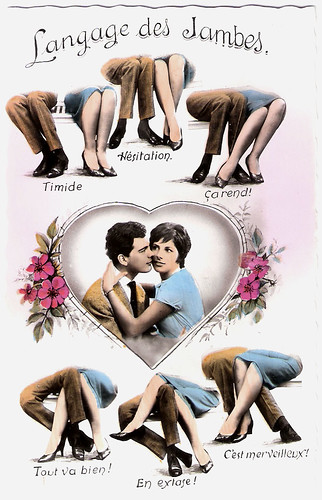
French postcard by Editions De Luxe G.P., Paris, no. 378.
This is a post for everyone with a heart, and especially for Ivo.

German Postcard by Krüger, no. 900/272.
Film and TV actress Barbara Valentin (1940-2002) was dubbed the 'German Jayne Mansfield' and a 'Scandal Magnet'. Her résumé includes sexploitation but also art films directed by Rainer Werner Fassbinder. Her private life was fodder for the tabloids. Pop star Freddie Mercury was ‘the love of her life’.

German postcard by Ross Verlag, no. 5158/1, 1930-1931. Photo: Radio Pictures (RKO). Publicity still for Love Comes Along (Rupert Julian, 1930) with Lloyd Hughes and Bebe Daniels.

Dutch postcard by JosPe, no. 310. Photo: Metro-Goldwyn-Mayer (MGM). Publicity still for Sidewalks of New York (Zion Myers, Jules White, 1931) with Buster Keaton, Anita Page and Cliff Edwards.

German postcard by Krüger, no. 902/95. 1961. Photo: Sam Lévin. Publicity still for the anthology film Amours célèbres/Famous Love Affairs (Michel Boisrond, 1961). Alain Delon and Brigitte Bardot starred in the segment Agnès Bernauer.

German postcard by Ross Verlag, no 6452/1, 1931-1932. Photo: Fox. Publicity still for Delicious (David Butler, 1931) with Charles Farrell and Janet Gaynor.

German postcard by Photochemie, Berlin, no. K.2823. Photo: Sommer Film, Berlin.
Ernst Matráy (1891-1978) was a Hungarian dancer, choreographer, actor and film director. In Berlin, he worked with Max Reinhardt and Ernst Lubitsch. With his sister-in-law, Katta Sterna, he formed an ideal film couple. Together with his wife, Maria Solveg, he later did the choreography for some classic Hollywood films.
Weddings for soldiers who were forbidden to marry
St. Valentine's Day began as a liturgical celebration of one or more early Christian saints named Valentinus. Several martyrdom stories were invented for the various Valentines that belonged to 14 February.
A popular hagiographical account of Saint Valentine of Rome states that he was imprisoned for performing weddings for soldiers who were forbidden to marry and for ministering to Christians, who were persecuted under the Roman Empire.
According to legend, during his imprisonment, he healed the daughter of his jailer, Asterius. An embellishment to this story states that before his execution he wrote her a letter signed "Your Valentine" as a farewell.
Today, Saint Valentine's Day is an official feast day in the Anglican Communion, as well as in the Lutheran Church. The day was first associated with romantic love in the circle of Geoffrey Chaucer in the High Middle Ages, when the tradition of courtly love flourished.
In 18th-century England, it evolved into an occasion in which lovers expressed their love for each other by presenting flowers, offering confectionery, and sending greeting cards known as 'valentines'.
Valentine's Day symbols that are used today include the heart-shaped outline, doves, and the figure of the winged Cupid. Since the 19th century, handwritten valentines have given way to mass-produced greeting cards.

Latvian postcard by JUR, Riga.
Hungarian-born singer and actress Márta Eggerth (1912-2013) maintained a global career for over 70 years. She was the popular and talented star of 30 German and Austrian operetta films of the 1930s. Many of the 20th century's most famous operetta composers, including Franz Lehár, Fritz Kreisler, Robert Stolz, Oscar Straus, and Paul Abraham, composed works especially for her. After the rise of the Nazis, she continued her career in the US, together with the love of her life, tenor Jan Kiepura.

German postcard by Ross Verlag, Berlin, no. 61/2, 1926. Photo: Münchner Lichtspielkunst AG (Emelka). Publicity still for Ich hab mein Herz in Heidelberg verloren/I Lost My Heart in Heidelberg (Arthur Bergen, 1926) with Werner Fuetterer and Dorothea Wieck.

German postcard by Rotophot, no. 220/1. Photo: Becker & Maass, Berlin.
German actress Ida Wüst (1884-1956) was a Ufa star who appeared in almost 150 films. In the 1930s she became one of the most popular aunts of the German cinema. Her one-time husband, German actor Bruno Kastner (1890-1932) was one of the most beloved stars of the 1910s and 1920s. His parts as the elegant and charming dandy made him a heart throb of the German silent cinema.

Austrian postcard by Lichtbild-Vertrieb Paula Weizmann, Wien, no. F 7. Photo: Interwest / Union-Film / Haenchen. Publicity still for Die Halbstarken/Teenage Wolfpack (Georg Tressler, 1956) with Karin Baal and Horst Buchholz.

German postcard by Ross Verlag, no. 709. Photo: Ufa. Publicity still for Zwei Herzen und ein Schlag/Two Hearts Beat as One (Wilhelm Thiele, 1932) with Lilian Harvey and Wolf Albach-Retty. Collection: Egbert Barten.

French postcard by Editions De Luxe G.P., Paris, no. 378.
This is a post for everyone with a heart, and especially for Ivo.
1 comment:
hmm romantic posts ( TOM AND JERRY HUNGARIAN RHAPSODY FULL EPISODE )
Post a Comment